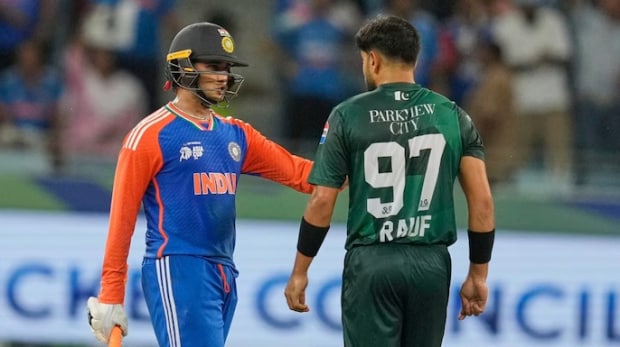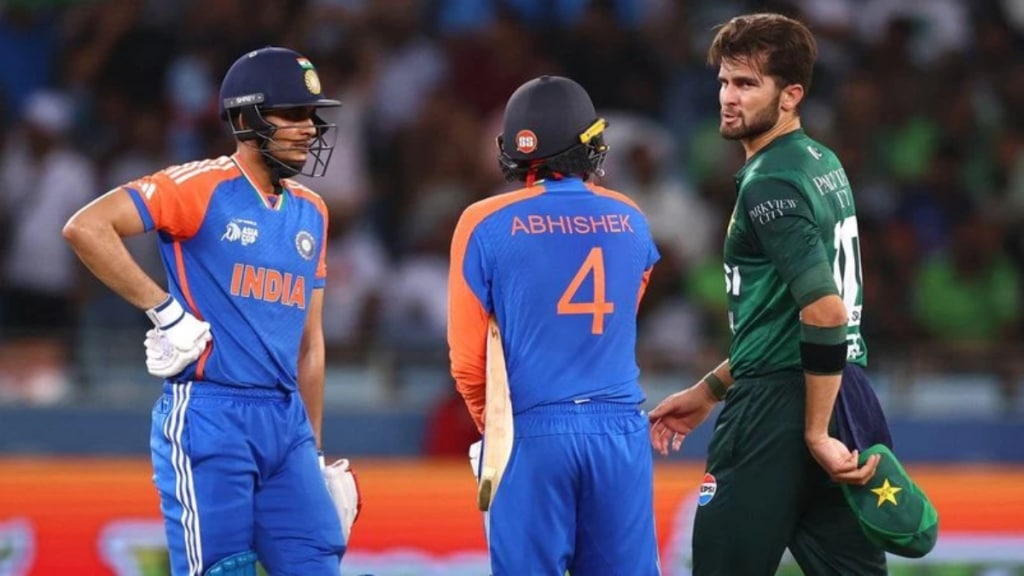India and Pakistan rarely just play a cricket match. What unfolds is closer to a play, with moments of drama, provocation and theatre that live longer than the boundaries and wickets themselves. The latest clash in Dubai was a reminder: the runs mattered, but what people will remember are the gestures, the sledges, the crowd’s appetite for conflict, and the gulf in maturity between the two sides.
When a fifty turned into theatre
Sahibzada Farhan’s half-century should have been a solid base for Pakistan. Instead, it became the opening act of something else. He celebrated not with a quiet raise of the bat, but with a gun-firing mime aimed into the crowd. It wasn’t new either. Back in the 1985 World Series Cup final, Qasim Umar had responded to being yorked first ball by Kapil Dev with the same gesture, a gun pointed at the stands, defiance where runs were absent. Forty years on, the gesture returned, and so did the conversation it triggered.
But like Umar back then, Farhan’s theatre outlived his batting. After the celebration, his strike-rate stalled, Pakistan’s momentum drained, and what had looked like a platform became another reminder of how fleeting their surges against India often are.
Sparks and stares: Abhishek versus Rauf
The heat of the evening rose when Haris Rauf, after being taken for runs, Turned towards the Indian fans, spreading his arms like an aeroplane diving through the air. Cameras caught the scene in full: Abhishek Sharma trading words with him, Gill’s stony expression, Rauf’s sneer, the dugout’s agitation. It was more than just cricket; it was theatre stitched together by body language.

These gestures are small acts, but they carry weight. They provoke, they rile, they become symbols that fans replay endlessly on social media. They also show how players are conditioned to display toughness, how supporters love bravado, and how national pride seeps into even the smallest movements.
Pakistan’s distractions and their fans’ delusion
The story does not end on the field. Pakistan’s management has once again chosen deflection over introspection. A week ago it was the “handshake saga.” Now it is Fakhar Zaman’s dismissal. Despite clear replays and even their captain admitting he “might be wrong,” Pakistan have filed an official complaint to the ICC against umpire Ruchira Palliyaguruge.
And then there is the crowd. For many Pakistani fans, a gun mime here, an aeroplane gesture there, or even a six off Bumrah is treated as consolation enough. Social media fills with clips of those fragments, presented as though they were victories. It is a comforting delusion to hold onto moments while ignoring the full picture. The truth is simple: Pakistan keep inventing stories, India keep inventing solutions.
The broadcasters know the audience
While this played out, the broadcasters fed the frenzy. On one hand, fans had been running boycott hashtags days earlier. On the other, the same fans flooded timelines during the match demanding fewer ads and more close-ups of the confrontations. This is modern fandom in its rawest form. People love sixes, but they crave conflict. They want to see words mouthed, tempers fray, umpires separate players. In films they cheer actors hurling abuses; in cricket they cheer when stump mics pick it up live.
Aggression, whether scripted or real, is entertainment. And the broadcasters, armed with multiple replays, slow-motion stares, and zoomed-in sledges, know exactly how to deliver it.
India’s composure, Pakistan’s noise
Through all this theatre, one thing stood out. India’s players, even when dragged into arguments, never lost their structure. Abhishek Sharma blew kisses after his milestones, a response more playful than hostile. Shubman Gill focused on timing rather than theatrics. Tilak Varma closed the chase calmly, without fuss. There was a sharp contrast between a team grounded in composure and another chasing narratives outside the boundary ropes.
Abhishek Sharma’s rise
If the evening belonged to anyone, it was Abhishek Sharma. From dropping catches early to hammering Pakistan’s bowlers later, his story had every shade of redemption. His recent numbers confirm it is not a flash in the pan. In his last 11 innings he has crossed double figures every single time, scoring 538 runs at an average of 49 and a strike rate above 210. No batter in the world with 500 runs to his name scores quicker than him, his career strike rate of 197 sits at the very top.

He is not just striking at impossible speeds, he is doing it with consistency. For India, he represents not just a new opener, but a new model, one who marries aggression with reliability.
Curtain call
By the end of the night, three images stood apart. Sahibzada Farhan firing his imaginary gun. Haris Rauf spreading his arms as an aeroplane diving to the ground. Abhishek Sharma, lips pursed, sending a kiss into the crowd. One side celebrated with symbols of violence, the other with symbols of affection. Both made noise. Only one carried the scoreboard home.

This rivalry will always be theatre. But until Pakistan look inward rather than outward, the endings will stay the same. India walk off the field with wins. Pakistan walk off with excuses.

